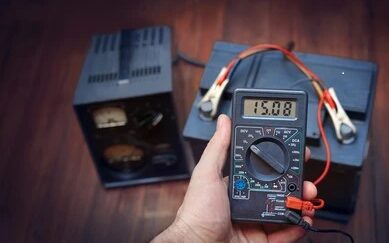Inverter batteries are essential components of power backup systems, ensuring uninterrupted electricity supply during outages. However, like any electronic device, inverter batteries can experience problems that hinder their performance.
This blog aims to address common inverter battery issues and provide valuable troubleshooting tips. As a reputable battery manufacturer in Rajasthan, India Select aims to assist users in overcoming these challenges while maximising the lifespan and efficiency of their inverter batteries.
5 Common Inverter Battery Problems
1. Inadequate Charging:
One prevalent issue faced by users is the insufficient charging of their inverter batteries. Loose connections, faulty wiring or a malfunctioning charging circuit can contribute to this problem. To resolve it, begin by checking the battery terminals and cables for any loose or corroded connections. Ensure a secure connection between the battery and the inverter. If the issue persists, it is advisable to seek assistance from a professional technician for further investigation.
2. Reduced Backup Time:
If you notice a significant reduction in the backup time provided by your inverter battery, several factors may be at play. Ageing batteries, overloading the inverter or excessive power consumption by connected devices are common causes. To address this, start by evaluating the age of your battery. If it is nearing the end of its lifespan, consider replacing it with a new, reliable battery from a reputable manufacturer. Additionally, reduce power consumption by disconnecting unnecessary devices and avoid overloading the inverter beyond its capacity.
3. Excessive Battery Heat:
Excessive heat can significantly impact the performance and longevity of inverter batteries. Inadequate ventilation, prolonged usage without breaks or high ambient temperatures can contribute to battery overheating. To prevent this, ensure proper ventilation in the battery enclosure or room. Allow the battery to rest periodically, particularly during extended power outages. If ambient temperatures consistently rise, consider implementing cooling mechanisms such as fans or air conditioning to maintain an optimal operating environment.
4. Premature Battery Failure:
Premature battery failure can be frustrating and may result from factors such as overcharging, deep discharging or improper maintenance. It is crucial to adhere to the manufacturer’s guidelines for charging and discharging the battery. Avoid overcharging, as it can lead to electrolyte loss and internal damage. Likewise, deep discharging should be avoided, as it can cause irreversible harm. Regular maintenance, including terminal cleaning and electrolyte level checks, significantly extends the battery’s lifespan.
5. Insufficient Water Levels:
For lead-acid inverter batteries, low water levels can hamper performance and cause irreparable damage. Regularly check and maintain water levels to ensure optimal functioning. If you observe low water levels, add distilled water to the battery cells, ensuring proper submersion. Avoid using tap water or any other impure water sources, as they can adversely affect battery performance.
In conclusion, this blog by Select addresses common issues with inverter batteries and provides troubleshooting tips. Problems discussed include inadequate charging, reduced backup time, excessive battery heat, premature battery failure and insufficient water levels. It emphasises the importance of checking connections, evaluating battery age, maintaining proper ventilation, following manufacturer guidelines and monitoring water levels for optimal battery performance and longevity.
What Sould Do When Inverter Not Turning On
If your inverter is not turning on, there are a few possible reasons and troubleshooting steps you can take:
1. Check the power source: Ensure that the inverter is properly connected to a power source. If it is connected to the main grid, check if there is a power outage or if the circuit breaker has tripped. If you use a battery as the power source, ensure it is adequately charged.
2. Verify the power switch: Check if the power switch or button on the inverter is in the “on” position. Sometimes, it may accidentally get switched off.
3. Inspect the fuse or circuit breaker: Inverters often have fuses or circuit breakers as a safety measure. Check if the fuse is intact or if the circuit breaker has tripped. Replace a blown fuse or reset the circuit breaker if necessary.
4. Examine the battery connections: Ensure that the battery connections are secure and free from corrosion. Loose or faulty connections can prevent the inverter from turning on. Clean the battery terminals and tighten the connections if needed.
5. Look for fault indicators: Some inverters have LED indicators that display error codes or fault information. Check if any fault indicator is illuminated or blinking. Refer to the user manual or manufacturer’s documentation to identify the meaning of the fault indicator and take appropriate action.

